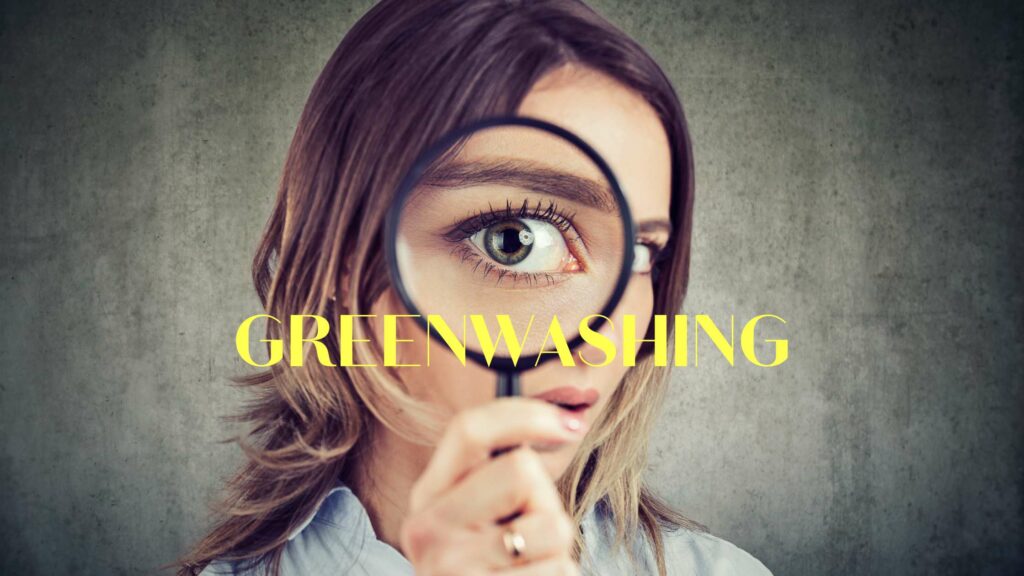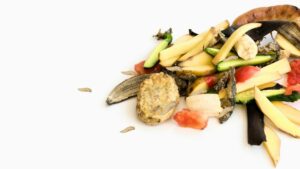BIOvative Magazin » 3 Tipps, wie Du Unternehmen beim Greenwashing entlarven kannst
3 Tipps, wie Du Unternehmen beim Greenwashing entlarven kannst
- 9. Januar 2023
- Autor: Philipp Dyllong
- Lesezeit: 9 Minuten
Hier hast Du erfahren, was Greenwashing ist und welche Methoden Unternehmen anwenden, um Dich zu täuschen. In diesem Beitrag möchten wir Dir genauer erklären, woran Du erkennen kannst, ob Unternehmen Greenwashing-Methoden anwenden.
Generell gilt, dass Du stets skeptisch sein solltest, insbesondere wenn Unternehmen in ihren Aussagen sehr vage bleiben. Du kannst außerdem davon ausgehen: die Wahrscheinlichkeit für Greenwashing steigt, je größer ein Unternehmen ist. Mit diesen 3 Tipps, erkennst Du zukünftig dreiste Greenwashing-Lügen.

1. Nutze die richtigen Apps
Da viele Greenwashing-Methoden mittlerweile sehr ausgefeilt sind, kommt man oft nicht umhin, selber aktiv zu recherchieren. Für all diejenigen, für die das zu viel Energie oder Zeit kostet, sind Apps wie GoodOnYou oder CodeCheck ein guter Start. Diese Apps schätzen die Nachhaltigkeitsbemühungen von Unternehmen oder Produkten ein und informieren Dich zum Beispiel über problematische Inhaltsstoffe oder Produktionsbedingungen. Dabei geht jedoch jeder Anbieter anders vor. Bei CodeCheck gab es in der Vergangenheit Kritik, dass nicht alle hinterlegten Daten aktuell seien und einige schädliche Stoffe gar nicht als solche deklariert würden. In 2021 hat das Unternehmen hinter CodeCheck Insolvenz angemeldet. Es bleibt spannend zu sehen, ob die App weiterhin aktualisiert wird und bestehen bleibt. Da die Bewertungsmethoden nie 100% transparent sind und Werbeanzeigen/Marktforschung zur Umsatzgenerierung genutzt werden müssen, können diese Apps nur ein erster Anhaltspunkt in Bezug auf Greenwashing sein.
Die App Buycott zeigt Dir, welche Marken zu welchem Konzern gehören. Das muss natürlich nicht immer ein Ausschlusskriterium sein, kann aber helfen eine Marke für Dich besser einzuordnen.
2. Mach eine Meta-Analyse der Marke
Oftmals führt kein Weg daran vorbei, das Unternehmen im Großen und Ganzen zu betrachten. Wirklich nachhaltige Unternehmen integrieren dabei sozial- und umweltverträgliche Maßnahmen in ihre komplette Tätigkeit, nicht nur in eine kleine Produktpalette oder einige Standorte. Daher ist es ein guter Startpunkt Dich zu fragen, wie bestimmte Nachhaltigkeitsbemühungen in den Gesamtkontext des Unternehmens passen. Das lässt sich sehr gut einordnen, indem man die folgenden Fragen überprüft:
- In welchen Lobbyorganisationen oder Unternehmensverbänden ist das Unternehmen Mitglied?
- Welche anderen Organisationen (sowohl positiv als auch negativ) werden durch das Unternehmen gefördert?
- Welche aktuellen oder vergangenen Skandale gab es oder gibt es?
- Wie agieren gerade internationale Unternehmen in anderen Teilen der Welt?
Indem Du Dir diese Fragen stellst, kannst Du Dir einen guten ersten Eindruck verschaffen, mit was für eine Art Unternehmen Du es zu tun hast. Hierbei gilt:
Unternehmen, die in der Vergangenheit oder auch aktuell negativ aufgefallen sind, solltest Du deutlich skeptischer betrachten.
Öffentlichkeitsarbeit mit Unternehmenspolitik vergleichen
Da Greenwashing in erster Linie eine PR-Strategie ist, deckt sie sich sehr selten mit dem tatsächlichen Handeln des Unternehmens. Indem Du Dir zum Beispiel das politische Engagement des Unternehmens ansiehst, kannst Du schnell einschätzen, ob sich die Nachhaltigkeitsbemühungen mit der Tätigkeit des Unternehmens decken. Ein gutes Beispiel sind Energieunternehmen, die sich gern einen grünen Anstrich geben, aber weiterhin für einen möglichst späten Kohle-Ausstieg plädieren.
Außerdem solltest Du Dir die Frage stellen, warum diese Kampagne oder Aktivität gerade jetzt durchgeführt wird. Gibt es zum Beispiel gerade eine unbeliebte Gesetzesvorlage, die dadurch verhindert werden soll? Versucht man, eine Bürgerinitiative zu beschwichtigen?
Ebenfalls ein guter Ansatzpunkt ist es, zu prüfen, wie das Unternehmen mit Kritik und Kritikern im Allgemeinen umgeht. Werden Kritiker ignoriert oder wird der Versuch unternommen, sie zu verharmlosen oder unglaubhaft zu machen? Dann sollten bei Dir alle Warnsignale angehen.
Achte auf Transparenz
In welchem Umfang Unternehmen Informationen zu ihren Produkten und Lieferketten mit der Öffentlichkeit teilen, lässt Schlussfolgerungen zu, ob das betroffene Unternehmen etwas verbergen möchte. Welche Zahlen veröffentlicht es und wie kommen diese zustande? Welche Information hält es bewusst unter Verschluss?
Häufig ist gerade das Thema Lieferkette bei vielen Unternehmen eine Blackbox für Verbraucher. Sehr wenige Unternehmen kommunizieren überhaupt keine oder nur unvollständige Informationen zu ihren Zulieferern. So erfährst Du im besten Fall den Zulieferbetrieb, jedoch nichts über die Arbeitsbedingungen vor Ort. Denn nicht nur Umwelt-Aspekte werden gern beschönigt. Auch darüber, wie die Arbeitnehmer in Zuliefer-Betrieben behandelt werden, wird gern getäuscht (Stichwort „Sweatwash“). Um dem vorzubeugen, gibt es die sogenannten ESG-Kriterien, mit denen die Sozialverträglichkeit der Lieferkette zertifiziert wird.
Überprüfe die Zahlen
Selbst wenn Unternehmen öffentlich interne Zahlen kommunizieren, kannst Du diese nicht immer für bare Münze nehmen. Wichtig ist, dass die Zahlen auch nachprüfbar sind. Veröffentlicht ein Unternehmen hingegen nur relative Zahlen oder sind diese nicht nachprüfbar, solltest Du den gemachten Aussagen gegenüber sehr skeptisch sein.
Gern brüsten sich Unternehmen zum Beispiel mit Investitionen in nachhaltige Projekte oder Produkte oder kündigen diese an. Um realistisch einschätzen zu können, wie wichtig es dem Unternehmen mit dem Thema Nachhaltigkeit ist, solltest Du diese Investments ins Verhältnis setzen. Oftmals machen solche Projekte gerade bei großen Firmen einen viel geringeren Anteil am Gesamt-Investment aus, als sie zugeben.
Nicht auf Öko Rhetorik hereinfallen
Sehr viele Unternehmen machen sich mittlerweile Begriffe aus dem Bereich der Nachhaltigkeit zunutze. Beliebt sind unter anderem Begriffe wie „klimafreundlich“, „klimaneutral“, „umweltschonend“, „fair“, „biologisch zertifiziert“, „CO²-neutral“. Das Problem ist jedoch, dass diese Begriffe nicht gesetzlich geschützt oder definiert sind. Was der Einzelne darunter versteht, ist somit Interpretationssache.
So klingt „vegan“ erstmal sehr gut, wenn man Tierleid vermeiden will. Leider sind vegane Produkte stattdessen oftmals aus Erdöl und entsprechend schädlich für unseren Planeten. Ein anderes Beispiel sind „natürliche“ Rohstoffe wie Palmöl und Viskose. Wenn etwas „natürlich“ ist, klingt das erstmal gut. Worauf nicht eingegangen wird, ist, dass beide Rohstoffe für einen nicht unerheblichen Teil der Abholzung weltweit verantwortlich sind.
Achte auf die richtigen Zertifikate
Oftmals werben Unternehmen mit erfundenen, selbst erstellten oder irrelevanten Zertifizierungen und Labels für ihre Produkte. Dadurch können sie selbst beeinflussen, welchen Kriterien sie unterworfen sind, und es ist ein Leichtes, die Verbraucher zu täuschen. Indem Du auf vertrauenswürdige Zertifikate achtest, kannst Du Dir sicher sein, dass das Unternehmen ernsthafte Bemühungen im Bereich Nachhaltigkeit betreibt. Diese Labels sollten unabhängig und extern vergeben und überwacht werden.
Es gibt jedoch eine Unmenge an Zertifikaten. So ist zum Beispiel im Bereich Kleidung und Textilien das Cradle-to-Cradle-Zertifikat für vollständig biologisch abbaubare und kompostierbare Produkte hervorzuheben. Einen guten Überblick über die verschiedenen Zertifikate und ihre Vertrauenswürdigkeit kannst Du Dir bei Interesse auf siegelklarheit.de verschaffen. Die Informationen sind auch als App verfügbar.
Eine spannende App mit Fokus auf Bio und Fairtrade in diesem Bereich ist der NABU Siegel Check. Dir werden hier gesammelt Anforderungen an Unternehmen gezeigt, um das jeweilige Siegel zu erhalten.
3. Bleibe skeptisch und frage nach
Wie Du siehst, gibt es einige Anhaltspunkte anhand derer Du Greenwashing identifizieren kannst. Im ersten Schritt helfen Dir vielleicht Apps wie GoodOnYou weiter. Wenn Du es mit deinen Bemühungen ernst meinst, führt um eine eigene Recherche aber meist kein Weg herum.
In unserem aktuellen Wirtschaftssystem ist es leider viel zu leicht, Verbraucher zu täuschen und dadurch höhere Gewinne zu erzielen. Die Palette an Greenwashing-Skandalen ist umfangreich und wird jeden Tag länger.
Indem Du Dich selbst aktiv mit dem Thema beschäftigst und Unternehmens-Botschaften hinterfragst, kannst Du jedoch Deinen eigenen Beitrag dazu leisten, Greenwashing einzudämmen. Mit unserem Magazin möchten wir auch einen Beitrag dazu leisten, über Greenwashing aufzuklären und echte Nachhaltigkeit im Alltag zu integrieren.

Philipp Dyllong

Philipp Dyllong
Diese Artikel könnten Dich auch interessieren

Neues Biomüll-Gesetz 2025: Was sich für Dich ändert
Ab dem 1. Mai 2025 tritt in Deutschland eine neue Verordnung in Kraft, die die Entsorgung von Biomüll strenger regelt. Ziel ist es, die Qualität des Biomülls zu verbessern und die Umweltbelastung durch Fremdstoffe zu reduzieren. Doch was bedeutet das konkret für Dich als Verbraucher:in?

Maden in der Biotonne: Was tun?
Die Biotonne ist praktisch, umweltschonend – und im Sommer willkommenes Zuhause für allerlei Ungeziefer. Deshalb haben wir wertvolle Tipps zusammengestellt, die zeigen, was Du gegen Maden in der Biotonne tun kannst.

Zeitungspapier
Grundsätzlich ist Zeitungspapier biologisch abbaubar und kann daher auch in geringen Mengen in die Biotonne geworfen werden.

